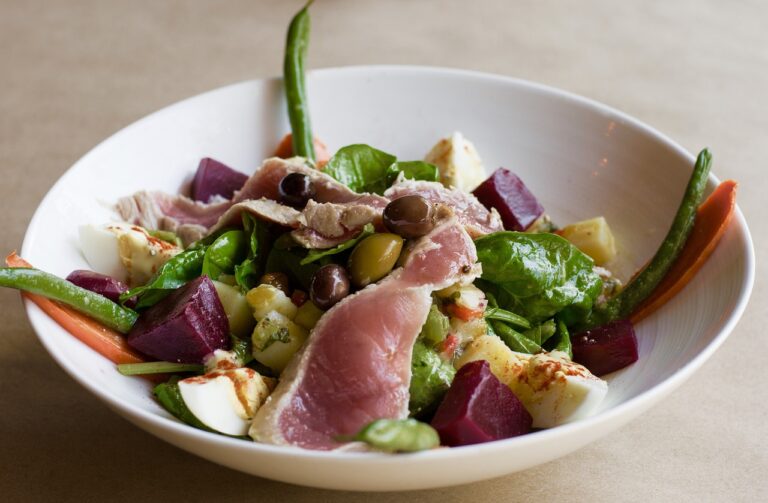Exploring the Diversity of Asian Cuisine: From Sushi to Szechuan
Asian cuisine boasts a rich and diverse culinary history that spans thousands of years. Each country across the vast continent of Asia has its own unique food traditions and culinary techniques that have been passed down through generations. From the intricate flavors of Japanese sushi to the aromatic spices of Indian curry, Asian cuisine is a celebration of diversity and culture.
The roots of Asian cuisine can be traced back to ancient times when early civilizations cultivated the lands and harvested local ingredients to create nourishing meals. Over time, trade routes and migrations introduced new flavors and cooking methods to different regions, leading to the fusion of culinary styles and the birth of iconic dishes. Today, Asian cuisine continues to evolve, blending traditional recipes with modern innovations to create a vibrant tapestry of flavors that tantalize the taste buds.
Regional Variations in Asian Cooking
Asian cuisine is incredibly diverse, with each region boasting its own unique culinary traditions and flavors. From the spicy and bold flavors of Thai cuisine to the subtle and delicate flavors of Japanese dishes, there is a wide range of tastes to explore. The use of fresh herbs and spices, as well as the emphasis on balance and harmony in flavors, are common threads that run through many Asian cuisines.
In China, the cuisine varies greatly between different regions, with each area having its own distinct style of cooking. Sichuan cuisine is known for its bold and spicy flavors, while Cantonese cuisine is prized for its delicate and fresh taste. In India, the diversity of regional cuisines is reflected in the wide array of spices and cooking techniques used. Whether it’s the fiery curries of the south or the creamy dishes of the north, Indian cuisine is a true reflection of the country’s rich cultural heritage.
Ingredients Commonly Used in Asian Dishes
Asian cuisines are known for their vibrant and diverse flavors, which are achieved through the use of a variety of key ingredients. Fresh herbs and spices play a crucial role in enhancing the taste and aroma of Asian dishes. Commonly used herbs include cilantro, Thai basil, lemongrass, and mint, adding a burst of freshness to soups, stir-fries, and curries.
Soy sauce, fish sauce, oyster sauce, and hoisin sauce are staples in Asian cooking, providing depth and umami to various dishes. These savory sauces are often used to season meats, noodles, and vegetables, creating a harmonious symphony of flavors on the palate. Additionally, rice vinegar, sesame oil, and chili paste are frequently utilized to add tanginess, nuttiness, and spiciness to Asian recipes, elevating the overall taste profile of the dishes.
• Fresh herbs such as cilantro, Thai basil, lemongrass, and mint
• Soy sauce, fish sauce, oyster sauce, and hoisin sauce
• Rice vinegar, sesame oil, and chili paste
In addition to these ingredients, Asian dishes often incorporate staples like garlic, ginger, and scallions for added depth of flavor. These aromatics are commonly used in stir-fries, marinades, and sauces to enhance the overall taste profile of the dish. Coconut milk is another key ingredient in many Southeast Asian cuisines, imparting a creamy texture and subtle sweetness to curries and desserts.
• Garlic
• Ginger
• Scallions
• Coconut milk
Furthermore, fermented ingredients such as miso paste in Japanese cuisine or kimchi in Korean cuisine are essential for adding complexity and richness to dishes. Fermented soybean products like tofu or tempeh are also widely used as meat substitutes in vegetarian Asian recipes. The use of pickled vegetables like daikon radish or Chinese cabbage adds a tangy crunch that balances out rich flavors in dishes.
• Miso paste
• Kimchi
• Tofu
• Tempeh
• Pickled vegetables
What are some staple ingredients in Asian cuisine?
Some staple ingredients in Asian cuisine include rice, soy sauce, ginger, garlic, and various types of noodles.
Are there specific spices commonly used in Asian dishes?
Yes, some common spices used in Asian dishes include chili peppers, five-spice powder, Sichuan peppercorns, and turmeric.
What are some popular vegetables used in Asian cooking?
Popular vegetables used in Asian cooking include bok choy, Chinese broccoli, bamboo shoots, and lotus root.
Is seafood a common ingredient in Asian cuisine?
Yes, seafood is a common ingredient in Asian cuisine, with dishes often featuring shrimp, fish, crab, and squid.
Are fermented ingredients commonly used in Asian cooking?
Yes, fermented ingredients like soy sauce, miso, and kimchi are commonly used in Asian cooking to add depth of flavor.
What are some traditional sauces used in Asian dishes?
Traditional sauces used in Asian dishes include hoisin sauce, oyster sauce, fish sauce, and sesame oil.
Are there any specific cooking techniques associated with Asian cuisine?
Yes, stir-frying, steaming, and braising are common cooking techniques used in Asian cuisine to preserve the natural flavors of the ingredients.







